

The first close-up view of Mars was provided by the Mariner 4 spacecraft which arrived at Mars on July 14, 1965 following an eight month journey from Earth. Mariner 4 was a flyby mission. It had a television camera aboard and returned 21 pictures of the surface of Mars.
 The first close-up image of Mars. |
 The Mariner crater. |
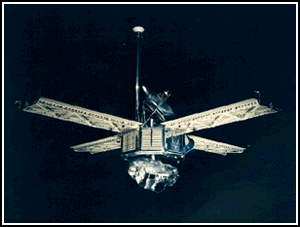
Mariners 6 and 7 were launched in February and March (respectively) of 1969. Together, these fly-by spacecraft sent back 143 approach pictures and 55 close-up pictures of Mars (the closest approach of either craft to Mars was 2,200 miles). These pictures revealled cratered deserts, terraced impact regions, collapsed ridges and craterless depressions. The pair of spacecraft also studied the Martian atmosphere and profiled its chemical composition.
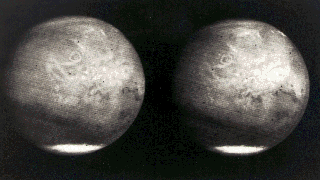
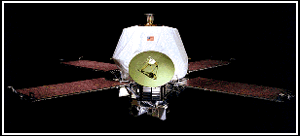
Launched in late May 1969, Mariner 9 became the first spacecraft to orbit another planet. It spent a year orbiting Mars twice a day photographing the surface and analyzing the atmosphere with infrared and ultraviolet instruments. When Mariner 9 first arrived, Mars was almost totally obscured by dust storms, which persisted for a month. But after the dust cleared, Mariner 9 proceeded to reveal a very different planet - one that boasted gigantic volcanoes and a grand canyon stretching 3,000 miles across its surface. More surprisingly, the relics of ancient riverbeds were carved in the landscape of this seemingly dry and dusty planet.
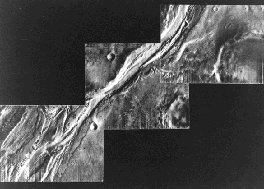 Mariner 9 image of Martian Valley. |
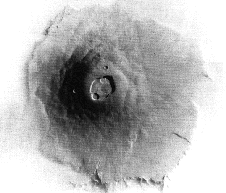 Mariner 9 image of Olympus Mons. |